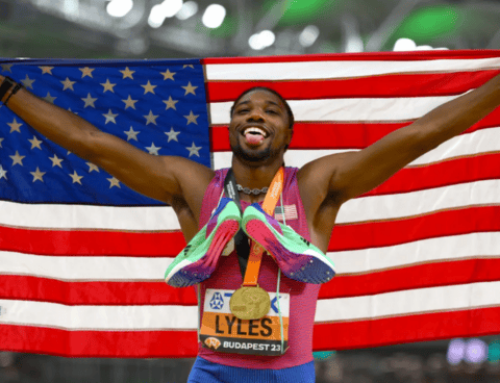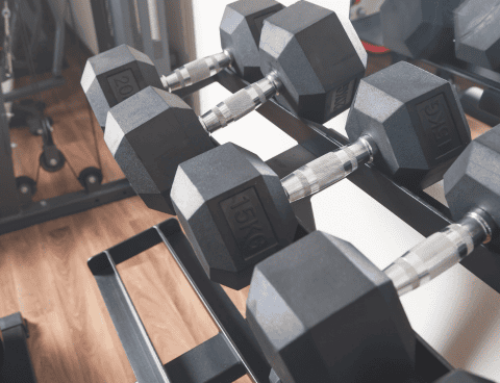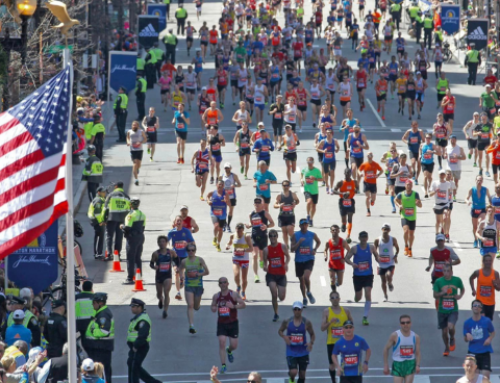HIIT Training for Fat Loss: Pros and Cons
High-Intensity Interval Training (HIIT) has been promoted as a panacea for fitness, achieving great results in less time. A recent overview of studies looking at using HIIT for fat loss showed that it can be as effective as moderate-intensity continuous training (MICT) in reducing fat, with the most improvement being seen in the most overweight individuals.
Unfortunately, exercising at high intensity when overweight brings other risks: the overweight individual is likely to be unfit and unprepared for any type of exercise. Rather than jumping into HIIT, a more moderate approach to start might be safer.
It must be stated that exercise is only part of a holistic approach to fat loss. Dietary changes and lifestyle will also help and must be considered.
What are the benefits of HIIT training compared to MICT?
First of all, in many types of research, an ‘either/or’ approach is taken to compare the results of different types of exercise. In reality, the athlete is likely to adopt a blended method: they might do some continuous running on one day and then some hill sprints on the next. So while the research compares the two, both are effective.
The main benefits include:
· Increased Fat Oxidation (using fat as a fuel source compared to Carbohydrate).
· Increased VO2 max (your endurance capacity).
· Improved body composition (less fat, more lean tissue).
· Improved exercise performance (you get better at what you are training.
All of these are desirable outcomes for both health and fitness. Individuals with better Fat Oxidation and who have less body fat have a reduced risk of several cardiovascular diseases and also the chance of suffering from Type 2 Diabetes.
HIIT shows improvement in Fat Oxidation in as little as four weeks’ training, but the longer the regime, the better the results (the longest study was 14 weeks). It shows a marginal better improvement than MICT but with less than half the total training time. This is the main appeal of HIIT, the same results in half the time.
In obese individuals, the improvements are greater using HIIT than MICT, but improvements are found in both types of exercise. In most of the studies, the subjects exercised three times a week. If you are looking to make improvements, it is important to understand the time commitment required.
What are the pitfalls of HIIT?
The clue is in the title: High Intensity. This means that individuals will be out of breath, and their muscles will ache both during the session and afterward. For those individuals who are unaccustomed to exercise, this can be extremely off-putting. There is also the risk of muscle strains if the HIIT includes vigorous movements, such as sprinting, that the body is unprepared for.
If people associate exercise with misery and pain, it is unlikely that they will continue the regime, no matter who ‘prescribes’ it for them.
As both MICT and HIIT are effective, why not use a blended approach that gradually introduces higher intensity work that builds fitness and confidence within the unfit newcomer?
The blended approach to fat loss
MICT requires continuous movement for 20 minutes or more, three times a week, to be effective. Most people think of jogging, but this is hard to do for the beginner and places undue stress on ill-prepared joints in the overweight individual.
Instead, why not bicycle, swim, row, or walk briskly? The most important thing is that the type of exercise is accessible and familiar to the individual: there is no point prescribing swimming if they have no access to a pool or bicycling if they have no bike. The best type of exercise is the one that can be done consistently.
Walking briskly is underrated: but for the beginner, it is a great way to get into the exercise habit. Cycling and rowing can be done outside or in the gym, whichever is easiest for the individual.
HIIT is more complicated; the work needs to be hard enough to get out of breath but easy enough to manage. Depending on your fitness level, this could be running, sprinting, jumping rope, or making faster sprints on a bike or rower. A 10-second fast run (fast for you) followed by 20 seconds rest, then repeating that nine more times. This means your session would be complete in 5 minutes. But ten fast runs are hard!
Or, you could try longer intervals if you are doing the bicycle or jumping rope, trying 20 seconds of work with 40 seconds of rest. Do that five times, and there are your 5 minutes.
Recommendation for beginners for first 4 weeks.
MICT 20 minutes twice a week.
HIIT 5 minutes once per week, 10-20 seconds of hard work, followed by 20-40 seconds of rest, building up to 10 minutes per week. That would be:
· 10/20 x 10 to start, leading to 10/20 x 20 or
· 20/40 x 5 to start, leading to 20/40 x 10.
After the initial four weeks, you can either increase the duration of your MICT or switch one of the sessions so that you do HIIT twice a week and MICT once a week. The important thing is to build a habit that you can sustain for months and years, rather than be put off and quit in the first month.
Good luck.
For more articles on tips for HIIT training, CLICK HERE!
RECOMMENDED FOR YOU
MOST POPULAR
HIIT Training for Fat Loss: Pros and Cons
High-Intensity Interval Training (HIIT) has been promoted as a panacea for fitness, achieving great results in less time. A recent overview of studies looking at using HIIT for fat loss showed that it can be as effective as moderate-intensity continuous training (MICT) in reducing fat, with the most improvement being seen in the most overweight individuals.
Unfortunately, exercising at high intensity when overweight brings other risks: the overweight individual is likely to be unfit and unprepared for any type of exercise. Rather than jumping into HIIT, a more moderate approach to start might be safer.
It must be stated that exercise is only part of a holistic approach to fat loss. Dietary changes and lifestyle will also help and must be considered.
What are the benefits of HIIT training compared to MICT?
First of all, in many types of research, an ‘either/or’ approach is taken to compare the results of different types of exercise. In reality, the athlete is likely to adopt a blended method: they might do some continuous running on one day and then some hill sprints on the next. So while the research compares the two, both are effective.
The main benefits include:
· Increased Fat Oxidation (using fat as a fuel source compared to Carbohydrate).
· Increased VO2 max (your endurance capacity).
· Improved body composition (less fat, more lean tissue).
· Improved exercise performance (you get better at what you are training.
All of these are desirable outcomes for both health and fitness. Individuals with better Fat Oxidation and who have less body fat have a reduced risk of several cardiovascular diseases and also the chance of suffering from Type 2 Diabetes.
HIIT shows improvement in Fat Oxidation in as little as four weeks’ training, but the longer the regime, the better the results (the longest study was 14 weeks). It shows a marginal better improvement than MICT but with less than half the total training time. This is the main appeal of HIIT, the same results in half the time.
In obese individuals, the improvements are greater using HIIT than MICT, but improvements are found in both types of exercise. In most of the studies, the subjects exercised three times a week. If you are looking to make improvements, it is important to understand the time commitment required.
What are the pitfalls of HIIT?
The clue is in the title: High Intensity. This means that individuals will be out of breath, and their muscles will ache both during the session and afterward. For those individuals who are unaccustomed to exercise, this can be extremely off-putting. There is also the risk of muscle strains if the HIIT includes vigorous movements, such as sprinting, that the body is unprepared for.
If people associate exercise with misery and pain, it is unlikely that they will continue the regime, no matter who ‘prescribes’ it for them.
As both MICT and HIIT are effective, why not use a blended approach that gradually introduces higher intensity work that builds fitness and confidence within the unfit newcomer?
The blended approach to fat loss
MICT requires continuous movement for 20 minutes or more, three times a week, to be effective. Most people think of jogging, but this is hard to do for the beginner and places undue stress on ill-prepared joints in the overweight individual.
Instead, why not bicycle, swim, row, or walk briskly? The most important thing is that the type of exercise is accessible and familiar to the individual: there is no point prescribing swimming if they have no access to a pool or bicycling if they have no bike. The best type of exercise is the one that can be done consistently.
Walking briskly is underrated: but for the beginner, it is a great way to get into the exercise habit. Cycling and rowing can be done outside or in the gym, whichever is easiest for the individual.
HIIT is more complicated; the work needs to be hard enough to get out of breath but easy enough to manage. Depending on your fitness level, this could be running, sprinting, jumping rope, or making faster sprints on a bike or rower. A 10-second fast run (fast for you) followed by 20 seconds rest, then repeating that nine more times. This means your session would be complete in 5 minutes. But ten fast runs are hard!
Or, you could try longer intervals if you are doing the bicycle or jumping rope, trying 20 seconds of work with 40 seconds of rest. Do that five times, and there are your 5 minutes.
Recommendation for beginners for first 4 weeks.
MICT 20 minutes twice a week.
HIIT 5 minutes once per week, 10-20 seconds of hard work, followed by 20-40 seconds of rest, building up to 10 minutes per week. That would be:
· 10/20 x 10 to start, leading to 10/20 x 20 or
· 20/40 x 5 to start, leading to 20/40 x 10.
After the initial four weeks, you can either increase the duration of your MICT or switch one of the sessions so that you do HIIT twice a week and MICT once a week. The important thing is to build a habit that you can sustain for months and years, rather than be put off and quit in the first month.
Good luck.
For more articles on tips for HIIT training, CLICK HERE!










